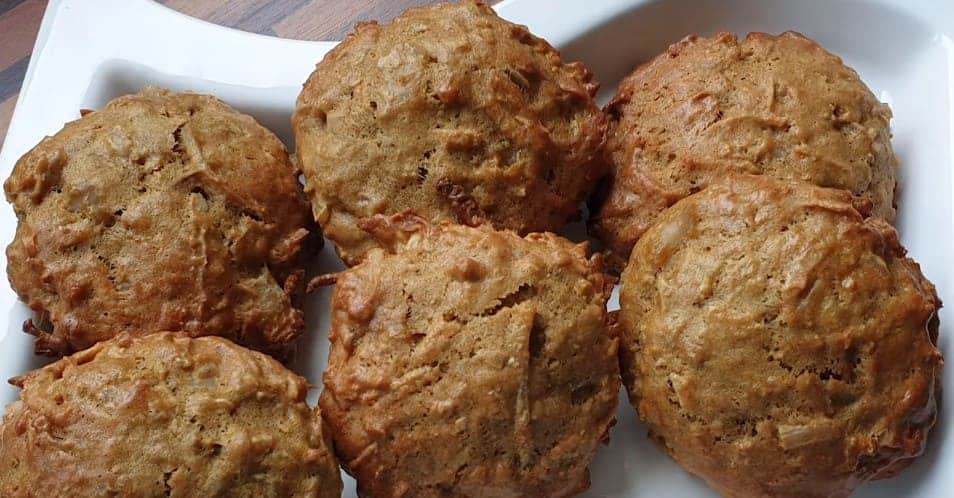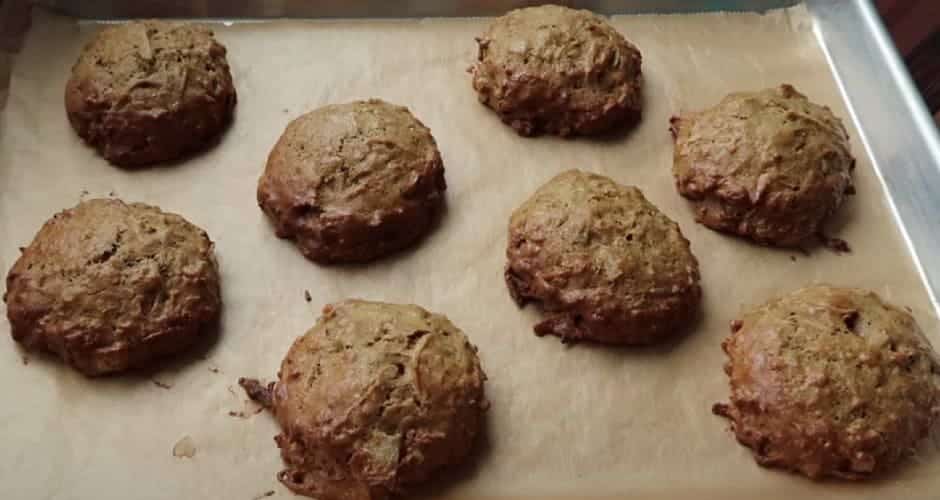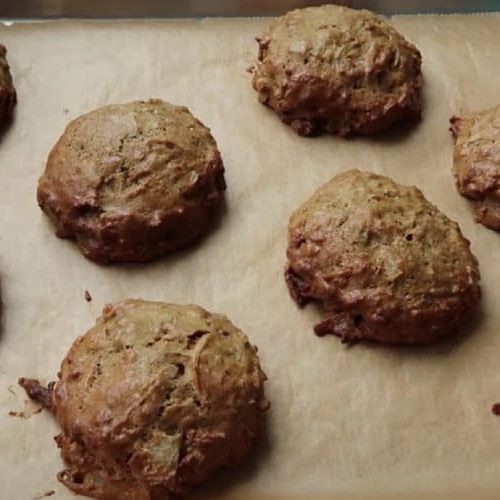Delight yourself with the Irresistible Besitos de Coco: A Traditional Venezuelan Candy
Sumérgete en un mundo de sabores exquisitos con los Besitos de Coco. Este postre tradicional venezolano te transportará a las playas tropicales con su dulzura irresistible y textura delicada. Aprende a prepararlos y déjate seducir por esta delicia que conquista paladares en todo el mundo.

Venezuelan Bienmesabe, Venezuelan Quesillo, Torta de Pan, Conservas de Coco, Dulce de Lechoza, Venezuelan Coconut Majarete
- Origins and Cultural Significance of Besitos de Coco
- Fundamental Ingredients for the Magic of Coconut Kisses
- The Basis of Perfection: Preparing the Kiss Dough
- The Aromatic Tandem: Butter and Vanilla Essence
- The Final Touch: Shredded Coconut and optionally Coconut Water.
- The Culinary Process: from Dough to Golden Kisses
- How to make coconut kisses
- Venezuelan Besitos de Coco Recipe - quearepas.com
- Presentation and Service: Tasting Experience
- Keeping Tradition Alive: Sharing and Enjoyment
Origins and Cultural Significance of Besitos de Coco
Besitos de Coco, although apparently simple in their composition, have a rich and complex history that goes back to the deepest roots of Venezuelan culinary tradition. These sweets are a culinary legacy that has been passed down from generation to generation, preserving the essence of authentic Venezuelan customs and flavors.
A Glimpse of its History: Discovering the origins and evolution of Besitos de Coco in the Venezuelan culinary tradition.
The exact origins of Besitos de Coco may be difficult to trace, but their presence in Venezuelan cuisine dates back centuries. These little coconut bites are believed to have their roots in the influences of indigenous, African and Spanish cuisine, which intertwined in the cultural melting pot that is Venezuela. The combination of ingredients such as coconut, spices and papelón reflects the mix of culinary traditions that characterizes the country's history.
Over time, Besitos de Coco have evolved and adapted to local preferences and resources. What began as a homemade treat in rural homes and coastal communities eventually became an integral part of traditional Venezuelan pastries. These sweets not only stood the test of time, but also thrived, becoming an essential element in everyday life and at special events.
More than a Dessert: Exploring the cultural and emotional meaning behind this traditional sweet and its role in festivities and celebrations.
Besitos de Coco are not simply a dessert; they are a symbol of cultural identity and a link to the traditions and values rooted in Venezuelan society. In many families, the preparation of Besitos de Coco has become an act of generational connection, where recipes and techniques are passed down from grandmothers to mothers and from mothers to children, keeping the culinary heritage alive.

Fundamental Ingredients for the Magic of Coconut Kisses
Besitos de Coco owe their distinctive flavor and character to a careful selection of ingredients that complement each other perfectly. From the sweet soul of the papelón to the spices that awaken the senses, each component plays a fundamental role in the creation of this prized delicacy.
Papelón: The Sweet Soul of Dessert: Unveiling the characteristics and role of papelón in the authenticity of Besitos de Coco.
Papelón, also known as panela, piloncillo, chancaca or raspadura in other regions, is the key ingredient that sweetens and adds depth to Besitos de Coco. This block of cooked and solidified sugar cane juice is much more than a sweetener; it is a symbol of tradition and authenticity in Venezuelan gastronomy.
Papelón provides a rich and complex sweetness, which differs from other refined sugars in its earthy flavor and caramelized nuances. Its solid consistency requires dissolving it in water to incorporate it into the dough, which also introduces a certain humidity that contributes to the texture of the Besitos. In addition to its sweetness, the papelón adds a characteristic dark color nuance, which becomes an integral part of the visual appearance of the Besitos.
Spices that Aromatize Enchantment: Delving into the influence of cinnamon, sweet anise and cloves on the distinctive flavor profile of this delicacy.
Spices are the magic touch that turns Besitos de Coco into a multisensory experience. Cinnamon, sweet anise and cloves combine to create an aromatic symphony that highlights and enhances the natural flavors of coconut and papelón.
- Cinnamon, with its warm, sweet aroma, brings a familiar flavor nuance that perfectly complements the sweetness of the papelón. In addition to its distinctive flavor, cinnamon also has appetite- and digestion-boosting properties, making Besitos de Coco even more irresistible.
- Sweet anise, with its subtle notes of licorice and a hint of freshness, adds an extra dimension to the flavor profile. Its presence is felt mainly in the background, but is essential to balance the sweetness and more intense spices.
- Cloves, with their pungent and spicy aroma, add surprising depth and complexity. Their influence is gentle but lasting, leaving an aftertaste that invites further savoring.
The Basis of Perfection: Preparing the Kiss Dough
The Wheat Flour Touch: Exploring how all-purpose wheat flour contributes to the desired texture in dough.
All-purpose wheat flour is the canvas on which the characteristic texture of Besitos de Coco is built. Its versatility and ability to form a soft, pliable dough are essential to achieve the combination of fluffiness and firmness that makes these sweets so appealing.
When mixed with the other ingredients, all-purpose wheat flour acts as the binder that binds the dough together, allowing a cohesive structure to form during the baking process. Flour also absorbs moisture from liquid ingredients, which contributes to the final texture. Its ability to retain moisture is especially important in Besitos de Coco, as it helps keep them moist and tender, creating a pleasant sensation in every bite.
Elevating with Baking Soda: Unraveling the effect of baking soda on the fluffiness and lightness of the Kisses.
Sodium bicarbonate of soda is a key ingredient in making Besitos de Coco because of its ability to act as a leavening agent. When combined with acidic ingredients, such as paprika and spices, baking soda generates carbon dioxide bubbles that expand during baking. This release of gas is what gives rise to the fluffiness and lightness in the dough.
Sodium bicarbonate of soda also plays a role in neutralizing the acidic flavors of the papelon and spices, helping to balance the overall flavor profile of the Besitos. In addition, its interaction with the other ingredients contributes to the chemical reaction that results in a golden, appetizing color on the surface of the baked treats.
The Aromatic Tandem: Butter and Vanilla Essence
Butter: Symphony of Flavor and Smoothness: Details on how melted unsalted butter amalgamates the dough and provides an indulgent texture.
Melted unsalted butter is an essential part of the richness and softness that characterizes Besitos de Coco. As it is mixed with the other ingredients, the butter is evenly distributed throughout the dough, creating a smooth, indulgent texture in each bite. Its presence also contributes to the unctuousness of the sweets, adding a sense of decadence that contrasts with the slightly crunchy texture of the shredded coconut.
In addition to its role in texture, butter contributes an unmistakable flavor that melds with the flavors of papelón and spices. This tandem of rich, aromatic ingredients works in harmony to create a complete taste experience that is warm, comforting and deliciously indulgent.
Vanilla Essence: Fragrance and Delicacy: The importance of vanilla extract in creating a balance of flavors in Besitos.
Vanilla essence is a key aromatic component that brings balance and smoothness to the flavor profile of Besitos de Coco. Although used in small quantities, its presence is notable and contributes to enhance the natural flavors of the main ingredients.
The sweet and delicate fragrance of the vanilla counterbalances the intensity of the spices and the sweetness of the papelón, creating a harmonious balance in each bite. The vanilla also adds an extra dimension of aroma and flavor that adds to the sensory experience of enjoying Besitos.
The Final Touch: Shredded Coconut and optionally Coconut Water.
Cocada: the Dessert Star: How shredded coconut adds a unique texture and flavor to Besitos.
Shredded coconut is the undisputed star of Besitos de Coco, providing a distinctive texture and flavor that are essential to the authenticity of this dessert. Coconut is a central ingredient in Venezuela's tropical cuisine and its presence in Besitos encapsulates the very essence of the country.
The shredded coconut adds a slightly crunchy texture that contrasts with the softness of the dough and creates a unique sensory experience. In addition to its texture, the shredded coconut infuses a tropical and exquisitely aromatic flavor into every bite. Its smooth, sweet flavor blends with the other ingredients, creating a balance of flavors that is evocative and satisfying.
Refreshing Possibilities: Exploring the optional addition of water or coconut milk to enhance the freshness of the dessert.
The optional addition of coconut water or coconut milk to the Besitos de Coco recipe adds a refreshing, tropical dimension to this classic sweet treat. The water or coconut milk helps to soften the dough and intensify the natural flavor of the shredded coconut, resulting in a moister, fresher bite.
Water or coconut milk can also add an additional hint of sweetness and creaminess, creating a more complex and satisfying taste experience. This optional addition is especially refreshing in hot climates, as it brings a tropical feel that transports diners to the beaches and breezes of Venezuela.
The Culinary Process: from Dough to Golden Kisses
Creating the Perfect Dough: Step by step, from mixing the ingredients to obtaining a homogeneous dough.
Preparing the dough for the Besitos de Coco is a meticulous process that requires attention to detail. It begins with the combination of dry ingredients, such as flour, baking soda and spices. Then, the liquid ingredients, including the dissolved papelón, melted butter and vanilla essence, are gradually incorporated to form a homogeneous dough.
It is important to mix the dough carefully and not over-mix to avoid over-developing gluten, which could result in a less desirable texture. The final consistency should be smooth and a little sticky, but still manageable.
Shaping and Baking: Revealing techniques for shaping the Besitos and baking them to their characteristic golden color.
Once the dough is ready, small bite-sized balls can be formed. To do this, take a portion of dough and gently roll it between your hands until it takes shape. These balls are placed on a prepared baking sheet, leaving enough space between them to expand while baking.
Besitos de Coco are baked in a preheated oven at a moderate temperature until they acquire a golden color on the surface. This process brings out the flavors and aromas of the ingredients, slightly caramelizing the papelón and toasting the shredded coconut.
Once baked, the Besitos de Coco are allowed to cool before being enjoyed. This final phase of the culinary process ensures that the flavors settle and the texture reaches its optimum.
How to make coconut kisses
Immerse yourself in the culinary magic of Venezuela with our Besitos de Coco recipe. Discover how to create these traditional sweets, where coconut, papelón and spices come together in a heavenly blend of flavors and textures. Thanks to Por Amor al Horno and their youtube channel.

Venezuelan Besitos de Coco Recipe - quearepas.com
Ingredients
- 250 gr Papelón (panela, piloncillo, chancaca, raspadura)
- 1/2 cup Water
- 2 cups All-purpose wheat flour
- 1/4 tbsp Salt
- 1/4 tbsp Sodium bicarbonate
- 1/2 tbsp Cinnamon
- 1/4 tbsp Sweet anise
- 1/8 tbsp Cloves
- 3 tbsp Melted unsalted butter
- 1 tbsp Vanilla extract
- 340 gr Shredded coconut
- 3 tbsp Water or coconut milk (optional)
Instructions
- Preparation of the Papelón:In a saucepan, heat the papelón and water over medium heat until the papelón is completely dissolved. Then, remove from heat and let cool.
- Dough Preparation:In a large bowl, combine the wheat flour, salt, baking soda, cinnamon, sweet anise and cloves. Mix well.Add the melted butter and vanilla extract to the dry mixture. Then, pour in the dissolved paprika and mix until a homogeneous dough is obtained.If desired, optionally add water or coconut milk to add more moisture and flavor to the batter. Mix until incorporated.
- Incorporating the Shredded Coconut:Add the shredded coconut to the batter and mix until evenly distributed. The resulting dough should be smooth and sticky.
- Forming the Kisses:Preheat oven to 350°F (180°C).With lightly moistened hands, take small portions of dough and form bite-sized balls. Place them on a baking sheet covered with parchment paper, leaving space between them.
- Baking and Finishing:Bake the Coconut Besitos in the preheated oven for approximately 15-20 minutes, or until golden brown on top.Remove from the oven and allow the Besitos to cool in the pan for a few minutes before transferring to a wire rack to cool completely.
- Enjoy:Once completely cooled, the Besitos de Coco are ready to be enjoyed. Serve on a plate and share this traditional Venezuelan treat with family and friends.
Video
Notes
Nutritional Information
(Per Serving, approximately 1 Coconut Kiss):- Calories: 130 kcal
- Fat: 6 g
- Saturated Fat: 5 g
- Cholesterol: 6 mg
- Sodium: 100 mg
- Carbohydrates: 18 g
- Dietary Fiber: 1 g
- Sugars: 10 g
- Protein: 1 g
Presentation and Service: Tasting Experience
Beauty in Presentation: Creative ideas to present the Coconut Kisses and surprise your guests.
Besitos de Coco are not only a delight for the palate, but also for the eyes. The creative presentation adds a special touch to this Venezuelan delicacy. Place them on a plate garnished with coconut leaves to evoke a tropical feel. You can also present them in wicker baskets or rustic ceramic plates to highlight the authenticity of their origin.
Tasting the Tradition: Immerse yourself in the sensory experience of tasting an authentic Besito de Coco.
When you savor a Besito de Coco, you enter an experience that transcends the culinary. The first bite reveals the crunchy texture of the coconut, followed by a burst of flavors: the sweetness of the paprika, the warmth of the spices and the smoothness of the vanilla. Close your eyes and immerse yourself in the richness of Venezuelan tradition as the flavors evoke memories and emotions.
Keeping Tradition Alive: Sharing and Enjoyment
Sharing the Taste from Generation to Generation: How the preparation and enjoyment of Besitos de Coco strengthens family bonds.
Besitos de Coco are much more than a dessert; they are a generational bond that unites families. By preparing them together, grandparents, parents and children share precious moments and pass on stories of tradition. The kitchen becomes a space to preserve and honor culture, and each bite carries with it the love and care of those who made them.
Innovative Adaptations: Exploring modern and creative variations of Besitos to keep the tradition alive in contemporary contexts.
As gastronomy evolves, so do traditional recipes. Experiment with modern variations of Besitos de Coco, such as adding dried fruit pieces or citrus zest for a refreshing twist. You could also create miniature versions or even incorporate them into other desserts, keeping the essence of tradition alive in contemporary culinary contexts.
Besitos de Coco are much more than a candy; they are a symbol of identity, a family bond and a window to the rich culture of Venezuela. Every step of their preparation and every shared bite builds and maintains the tradition, ensuring that the history and flavor of these delicious sweets continue over time.
Enjoy more Venezuelan desserts after savoring delicious empanadas or arepitas.
If you want to know other articles similar to Delight yourself with the Irresistible Besitos de Coco: A Traditional Venezuelan Candy you can visit the category Desserts.

